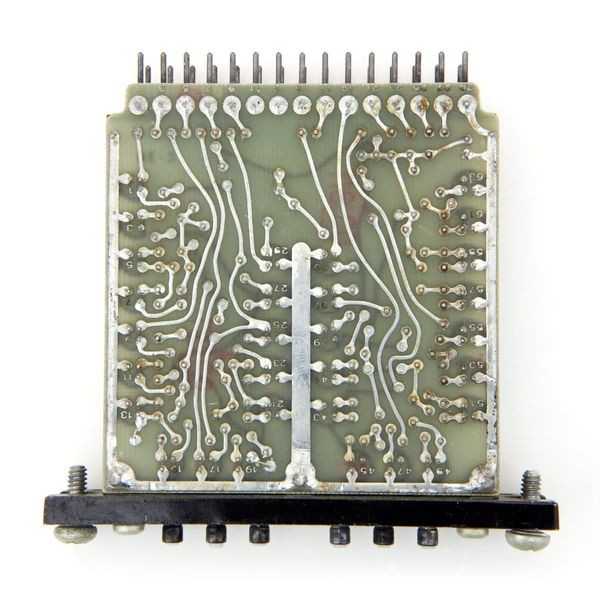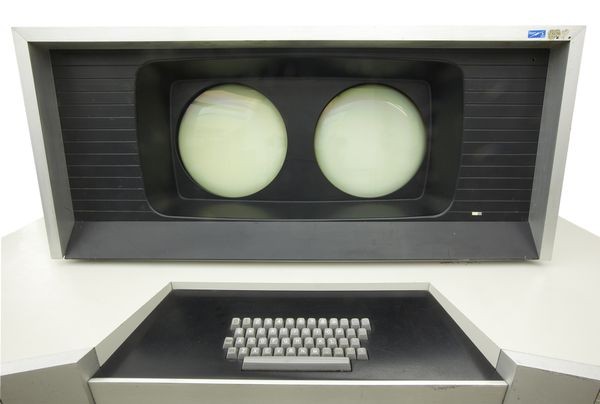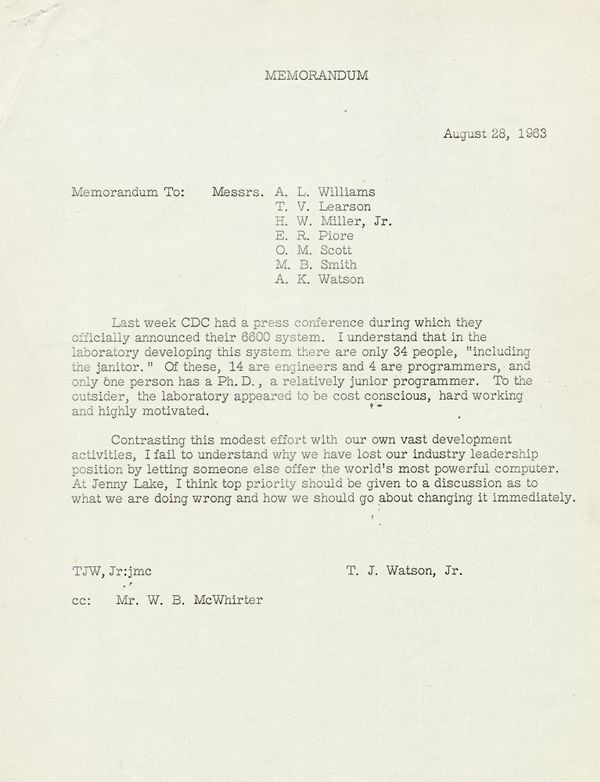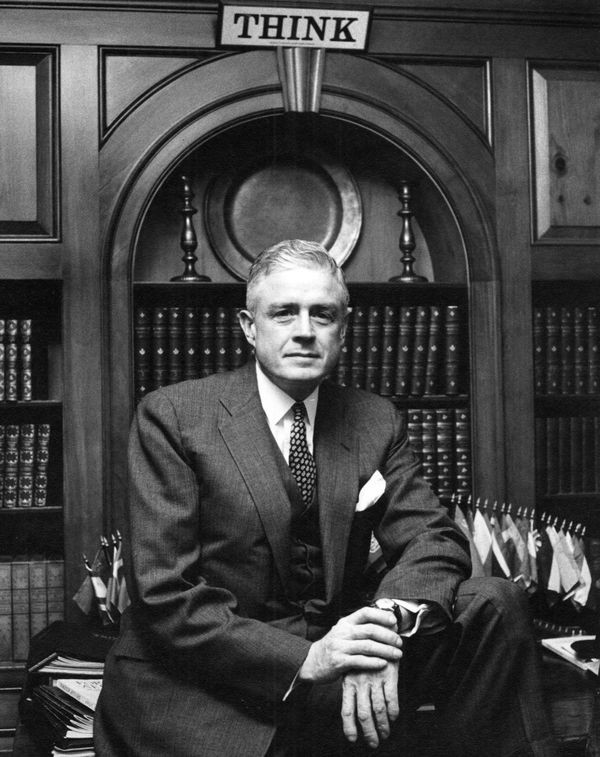CDC 6600’s Five Year Reign
CDC 6600 installation
The 6600 had 400,000 transistors and more than 100 miles of wiring. In addition to a blazingly fast floating-point processor, it had 10 “peripheral processors” that did housekeeping and input/output tasks at the same time.
CDC 6600's Five year Reign
The CDC 6600 toppled speed records in 1964. Control Data sold about 100 of them, penetrating markets beyond the usual government and military customers.
The 6600 executed a dizzying 3,000,000 instructions per second. Designed by supercomputer pioneer Seymour Cray, it wasn’t surpassed until the CDC 7600 in 1969—another Cray design.
CDC 6600 cordwood module
Before integrated circuits, "cordwood" modules let engineers pack components into small spaces, increasing speed by keeping wires shorter. Seymour Cray's early computers all used this construction. In the 6600, metal plates in contact with circulating Freon™ cooled the cordwood modules.
View Artifact DetailCDC 6600 operator console and quadrant
Seymour Cray's CDC 6600 design was innovative and elegant. Almost 10 times faster than any computer ever devised, it stunned the computing community. Customers wrote their own applications, from simulating explosions to timesharing, weather forecasting, and much more.
View Artifact DetailBattling to Be Fastest: CDC vs. IBM
Stronger. Faster. Better. Supercomputers are all about beating the competition. This race to be swiftest sparked a fierce rivalry between established giant IBM and “upstart” Control Data.
When Cray’s CDC 6600 streaked ahead in 1964, IBM chief Tom Watson, Jr. was furious. IBM quickly pre-announced faster models of its System/360 computers, drying up CDC’s sales.
But IBM never actually shipped its “6600 killer,” and CDC president William Norris responded with an antitrust suit. Four years later IBM settled, giving CDC cash and ownership of a computer services company, together worth over $600M.
Watson Jr. memo about CDC 6600
Watson penned this scathing memo asking how IBM lost “our industry leadership” to a company with “34 people, including the janitor.” Also known as "The Janitor Memo," it shows the impact Control Data Corporation and its computers had on the leadership of IBM.
View Artifact DetailIBM President Tom Watson, Jr.
Watson penned a scathing memo in 1963 asking how IBM lost "our industry leadership" to a company with "34 people, including the janitor."
View Artifact Detail



